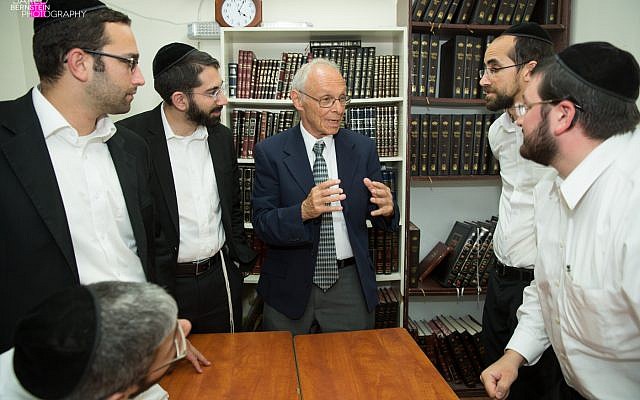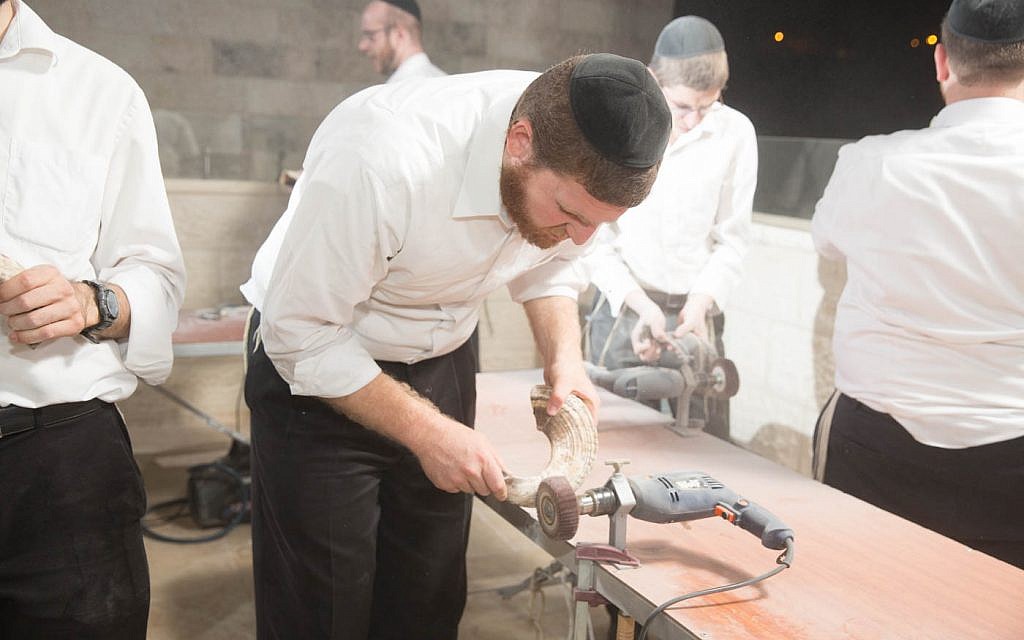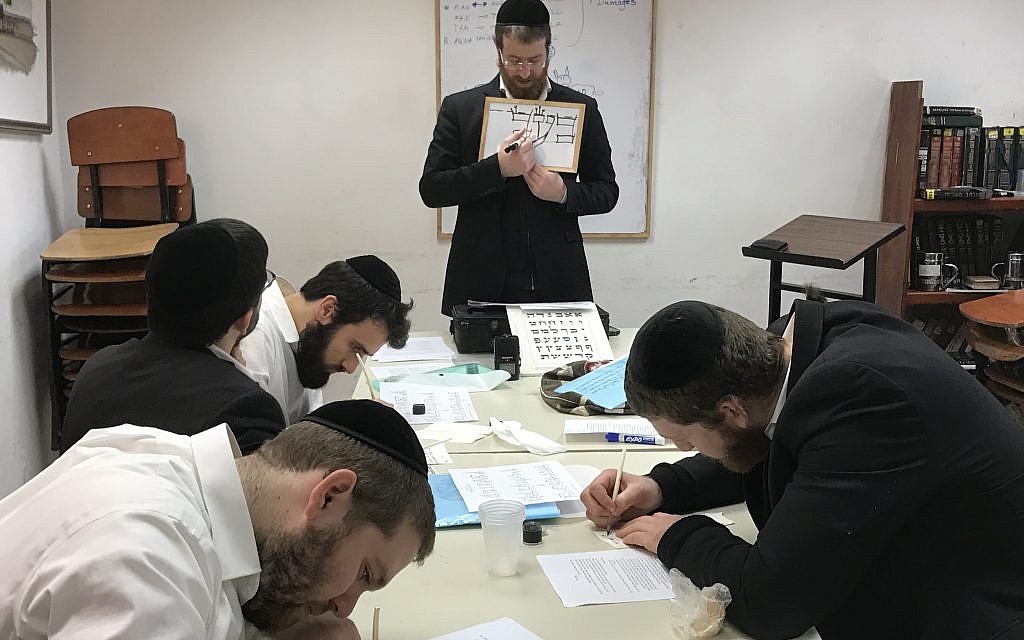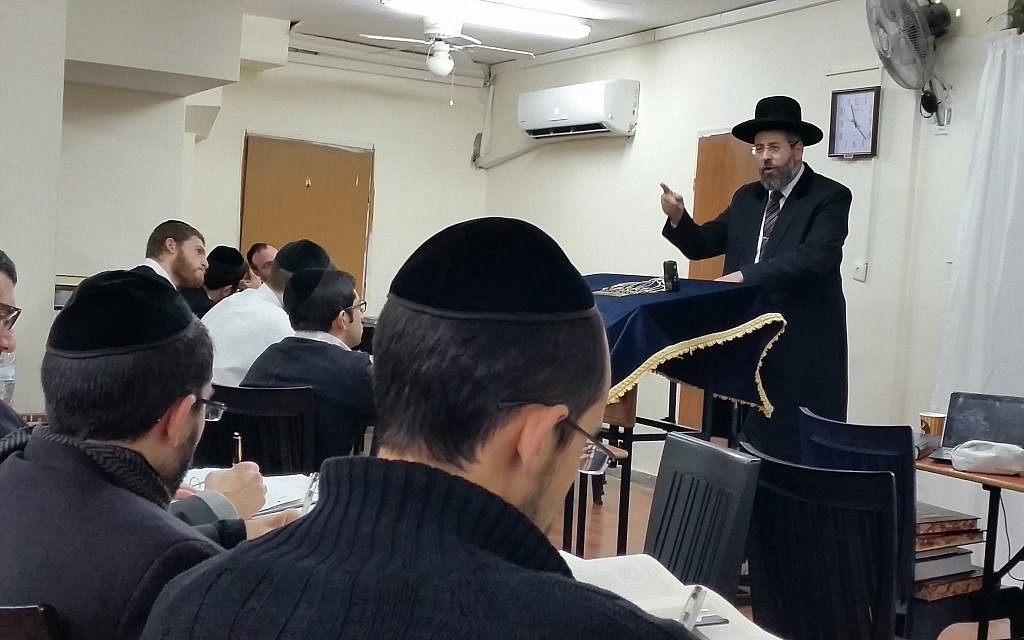Training for the Next Generation of ‘Problem-Solvers’
At The Center for Kehilla Development, a Jerusalem-based hub of rabbinic studies, potential rabbis learn how to serve their communities.

SPONSORED CONTENT – Paid for by The Center for Kehilla Development.
From the outside, The Center for Kehilla Development Ramat Eshkol building seems rather nondescript. But inside, there is a passionate flurry of activity, where young men are delving into the depths of the Torah not just for their own personal enrichment, but for the advancement of world Jewry.
At the main level, these young men daven Ma’ariv after a day of rigorous study. Upstairs, a rather unique workshop takes place as students learn to inspect garments to ensure that wool and linen are not combined. The mitzvah of checking for shatnez, as it’s called, is not often taught in Yeshiva and many small Jewish communities don’t have an authority certified to properly check the garments.
“Normally, in every Orthodox community there’s one person who knows how to administer a shatnez test. But in smaller communities in America, there’s nobody to do this, so they have to pack up all their clothes and ship them off to larger communities,” explained Rabbi Lawrence Kelemen, CKD dean.
These aspiring rabbis listen intently as they learn how to check if a garment, usually a suit, has a forbidden combination of material embedded it in. Through setting small snippets, the fringes alight to checking the garment under the microscope, these men learn how to provide this service once they graduate the five-year program.

“Generally, yeshivos provide an all-day Talmud program. Then, if someone decides he wants to become a rabbi, he leaves that program and joins one of the many rabbinical training programs providing an all-day halachah curriculum. Most of those programs focus just on the laws of Kashrut, although the more prestigious halachah programs do provide wider coverage,” Kelemen explained.
“The CKD curriculum includes extensive training in the science of education and marriage counseling, the complete Dale Carnegie training course, and an internationally accepted EMT certification. Every CKD fellow spends five years studying psychology and counseling, and receives a certificate in mental health counseling,” he said.
The CKD program, though innovative in approach, is not entirely new. Kelemen drew inspiration from the model standard between the 2nd and 19th century but abandoned after World War II.
“We aren’t trying to train just Torah scholars or rabbis. The CKD’s mission, and it’s radical path, is to train caretakers for the Jewish nation, people who will be able to provide – in the most professional manner possible – for every need a community may have,” he said.
“The core belief at CKD is that one’s integrity and character are of the utmost importance when it comes to caring for others,” he said. “Moses wasn’t just a talmudic expert or halachic authority. He was much more.”

This method of study appealed to CKD student Mordechai Katsevman from Russia. “CKD goes beyond typical Jewish studies; we’re given tools and opportunities to develop as a person. This is unprecedented full-time Torah learning program,” he said.
A program of this nature is in demand across the diaspora, where smaller Jewish communities are shrinking and even the larger ones are having difficulty attracting charismatic leaders that can properly engage with their congregants. CKD alums are in high demand, with most of the freshman class already placed in communities.
The graduates of CKD, many of whom have some yeshiva studying under their belt, enroll in the program because they want to go that extra mile and not only help community members nurture their spirit, but their body and soul too.
From psychology classes, to learning from established rabbinical authorities, to studying the value of shalom bayit (peace in the home) with their wives, these men plan to return to the diaspora with an open mind and heart.
“To find someone who’s a trained psychologist, who can answer any halachic question with a sourced answer, who is thoroughly rooted in Jewish studies, with broad knowledge and can administer CPR … someone who is there to take care of you – that is not usual,” Kelemen said of the program, which now has 27 students enrolled.

For Cherry Hill, N.J., native Yosef Platt, his upbringing certainly didn’t point to a life of Torah study. Platt, who grew up Reform, began to delve into Torah as an undergrad at George Washington University.
When he returns to America, he hopes that his love of Hashem will be contagious. “So much is transferable when you lead by example,” he said.
Yaakov Marmor, who made aliyah from Miami Beach, also found himself cultivating his own relationship with God at a later age.
A ba’al teshuvah who grew up modern Orthodox, Marmor realized he was praying without intention and simply going through the motions. “When I go back [to the U.S.], I want to teach my congregants how to put kavanah (concentration) into prayer and bring Hashem back into their life. It’s strange, but there are people who pray and don’t have God become a part of that.”
This is a common phenomenon across the diaspora – even in Orthodox circles, according to Kelemen. He recalls the original genesis of CKD, when a group of philanthropists who sit on various synagogue boards lamented that they couldn’t find rabbis who could prevent their congregants from chatting during prayer services.
“Our ultimate goal at CKD is that we’re here to make Jewish communities thrive.”
SPONSORED CONTENT – Paid for by The Center for Kehilla Development.



comments